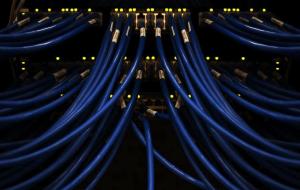In an increasingly connected world—where everything from streetlights and security cameras to drones and delivery robots rely on real-time data—network resilience is no longer optional. Smart cities, WISPs (Wireless Internet Service Providers), and IoT ecosystems demand faster, more stable, and future-ready infrastructure. And traditional gigabit connections are beginning to fall short.
That’s where 2.5G connectivity comes into play—bridging the gap between legacy networks and next-gen performance. It’s not just a speed upgrade—it’s a foundation for long-term, adaptable, and resilient networking.
The New Networking Landscape: Complex and Demanding
Modern deployments span vastly different environments, yet they share common challenges:
- Smart cities must support thousands of always-on devices—from environmental sensors to autonomous traffic systems—with minimal downtime.
- WISPs need high-throughput, low-latency backhaul for remote areas, all while managing dynamic client loads.
- IoT networks require reliable, scalable links for devices that can’t afford interruptions—from smart meters to healthcare monitors.
Legacy 1G infrastructure, designed in a much simpler era, can’t meet these evolving demands.
Why 2.5G Technology Makes the Difference
2.5G Ethernet offers 2.5x the bandwidth of traditional 1G links without requiring a full 10G overhaul. It’s a cost-effective way to break through performance bottlenecks while still using existing Cat5e/Cat6 cabling—ideal for retrofit projects or rapid scaling.
But the benefits go beyond speed:
- Greater throughput reduces congestion in high-density environments
- Improved link stability ensures reliable performance under sustained loads
- Lower latency supports time-sensitive applications like video analytics, cloud sync, and edge processing
This makes 2.5G not just a performance upgrade—but a stability and resilience enhancer.
Built for WiFi 6, WiFi 7, and the Cloud
WiFi 6 and WiFi 7 access points often exceed 1G throughput, rendering old switches a clear bottleneck. 2.5G uplinks ensure these high-speed wireless devices perform at their full potential, delivering better user experiences and stronger backhaul support for mesh networks.
In addition, 2.5G infrastructure integrates seamlessly with cloud-managed devices, including:
- Smart switches and APs
- AI-enhanced surveillance systems
- Remote monitoring gateways
The result is an architecture that’s flexible, cloud-aware, and ready for remote management at scale.
Future-Proofing with Hyconext: Built for the Next Decade
With its focus on advanced networking, Hyconext delivers 2.5G-ready solutions designed to adapt, scale, and evolve. Whether you’re deploying across a smart city district, optimizing a WISP core, or rolling out enterprise IoT, Hyconext equipment enables:
- Layered resilience with intelligent failover and power management
- Unified management through centralized platforms
- Sustainable scaling, thanks to PoE+ support and modular upgrade paths
In short, Hyconext is helping organizations future-proof their networks not just for today’s high-tech demands, but for whatever comes next.
A Smarter, Stronger Network Starts Here
From smart infrastructure to edge deployments, the demands on today’s networks are growing in speed, complexity, and mission-critical importance. 2.5G connectivity—powered by Hyconext—is the key to staying ahead of those demands with a solution that’s fast, flexible, and resilient.
If you’re planning tomorrow’s network today, 2.5G is where your future begins.
Upgrade now and prepare your WISP for the future of high-speed networking!



